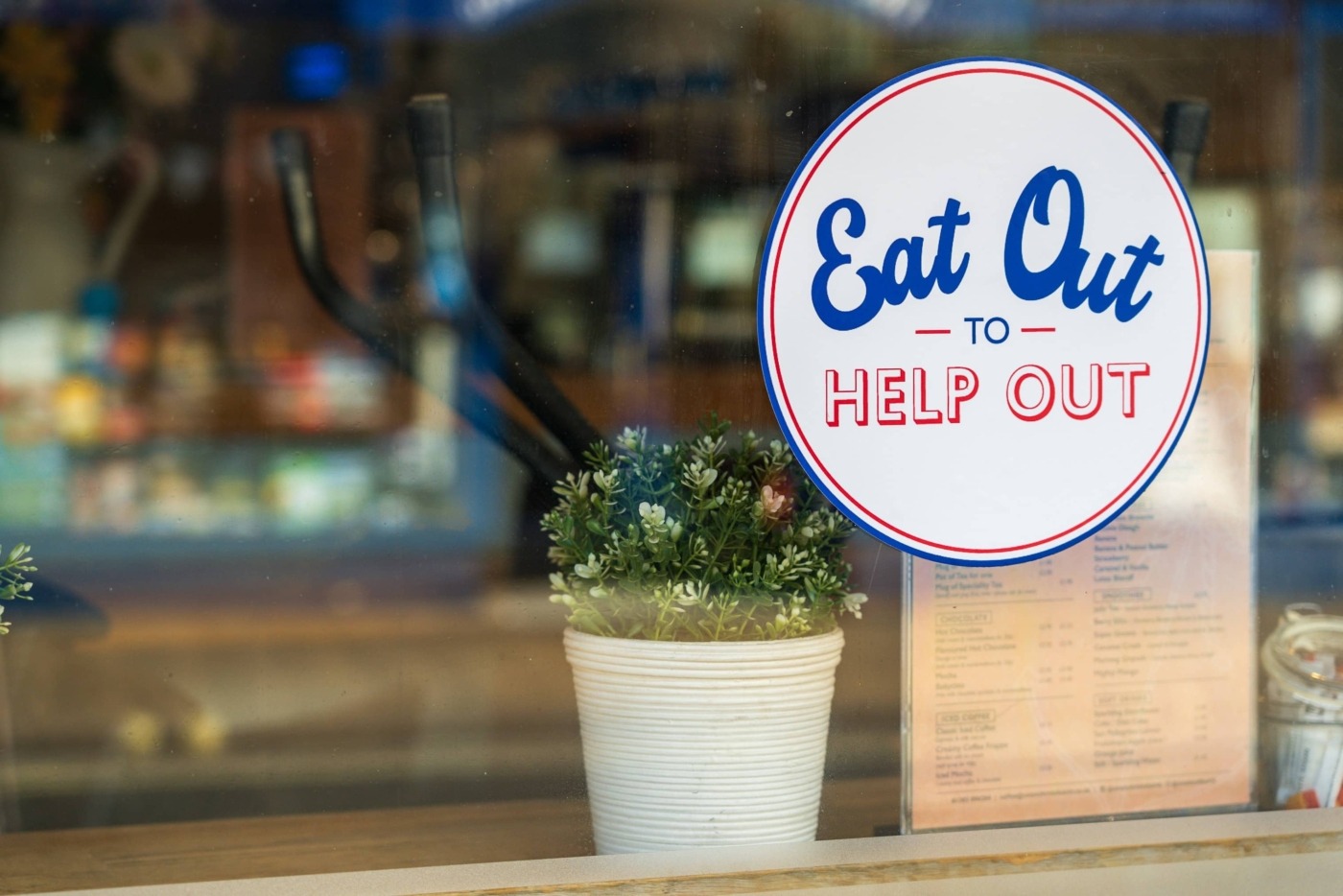Eat Out to Help Out: a temporary success
One of the government’s economic measures to help mitigate the impact of Covid-19 was the Eat Out to Help Out scheme, and it’s been one of the most obviously successful. Enticed by the prospect of half-price meals, diners have largely returned to restaurants to eat. But with the scheme now at an end, has it actually helped save the hospitality sector?
The scheme officially ran between 3 and 31 August. On Mondays, Tuesdays and Wednesdays between those dates, diners got a state-backed 50% discount on meals and soft drinks up to £10. Around 84,700 restaurants signed up to the scheme, and Monday-to-Wednesday bookings were up 53% compared to the same period in August 2019. On the final day of Eat Out to Help Out, there was a 216% increase in bookings against the 2019 equivalent – based on public reaction, the scheme was undoubtedly successful.
According to official government figures, more than 100 million meals were claimed under the scheme. The Treasury said that restaurants had made 130,000 claims worth £522 million at the start of September – that figure is expected to rise, as outlets have until the end of the month to claim. Chancellor Rishi Sunak said: “From the get-go, our mission has been to protect jobs, and to do this we needed to be creative, brave and try things that not government has ever done before. Today’s figures continue to show Eat Out to Help Out has been a success. I want to thank everyone, from restaurant owners to waiters, chefs and diners, for embracing it and helping drive our economic recovery.”
Around 80% of restaurants, pub and bar operators said that the scheme helped boost trade, and 71% said that they would like to see the scheme repeated again in the future
Around 80% of hospitality firms stopped trading in April and 1.4 million workers were furloughed, making it the worst-hit sector proportionally. The aim was to boost the struggling industry, and a majority of hospitality businesses said it was a success. Around 80% of restaurants, pub and bar operators said that the scheme helped boost trade, and 71% said that they would like to see the scheme repeated again in the future. Despite initial concerns about the difficulty of operating an establishment while complying with safety guidelines, only 32% said they had a problem. Stephen Wall, managing director and co-founder of the Pho restaurant chain, said: “[The scheme] has really been amazing. It has certainly benefited our early-week figures and seems to have encouraged the British public to dine out safely, as our restaurants are filling up and staying busy throughout the weekend.”
Eat Out to Help Out definitely had its critics, however. In August, it was reported that some restaurants were pulling out of the scheme due to increased hostility towards staff, leading to “physical and mental stress”. Kelly Hill, owner of the Tavern Inn in Newquay, said: “It has brought us nothing but negativity due to the huge demand, causing long waits on food, tables over-running and hostility towards out staff.” There were also concerns that the other days of the week were losing trade, and that it “would be a green light to promote junk food” at a time when obesity is increasingly discouraged, particularly as people flocked to chain restaurants and fast food instead of independent eateries.
The scheme was also one of the major contributing factors behind an inflation rate fall to 0.2% in August
The scheme was also one of the major contributing factors behind an inflation rate fall to 0.2% in August. This was the lowest level of inflation since December 2015 and a sharp drop from the 1% rate recorded in July, according to the Office for National Statistics (ONS), although it was significantly higher than predicted. Jonathan Athow, ONS deputy national statistician for economic statistics, said: “The cost of dining out fell significantly in August thanks to the Eat Out to Help Out scheme and VAT cut, leading to one of the largest falls in the annual inflation rate in recent years.”
Eat Out to Help Out ended in September, though a number of restaurants have decided to extend the discount. There is a feeling that maintaining footfall is the most important asset to the business, and that profits will follow. But it’s hard to deny that there’s a huge spanner now in the works – the threat of a second wave, and the all-too real prospect that new restrictions will cripple the industry yet again. The Chancellor has ruled out an extension to the scheme and, if people are forced to remain at home once again, the lack of a safety net for the hospitality industry could prove a death knell yet.

Comments